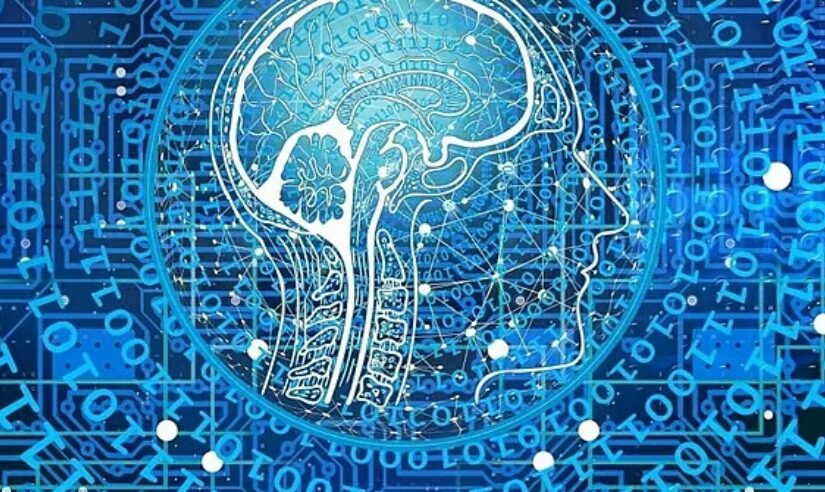In a dimly lit lab in Tsukuba, Japan, a molecular machine no larger than a virus pulses with invisible rhythms. It doesn’t hum like a supercomputer or glow like a quantum chip cooled to near absolute zero. Instead, it vibrates—quietly, precisely, and, if its creator is right, with the potential to upend everything we know about quantum computing.
Meet Dr. Anirban Bandyopadhyay, the Indian physicist whose work straddles the line between genius and heresy. His claim? That quantum computation—long believed to require cryogenic temperatures and billion-dollar labs—can happen at room temperature, inside molecules, using nothing more than the natural rhythms of life itself.
Too good to be true? Perhaps. But the science, and the story, demand a closer look.
To understand the magnitude of Bandyopadhyay’s claim, one must first understand the problem. Quantum computers, unlike classical ones, use qubits—quantum bits that can exist in multiple states simultaneously. This allows them to perform certain calculations exponentially faster than traditional machines.
But there’s a catch: qubits are fragile. They decohere—lose their quantum state—when exposed to heat, noise, or even the slightest environmental disturbance. That’s why today’s quantum computers, like those built by IBM or Google, operate at temperatures colder than outer space, using superconducting circuits or trapped ions.
This extreme fragility has made quantum computing expensive, bulky, and largely inaccessible. Enter Bandyopadhyay, who believes the future of quantum computing isn’t in dilution refrigerators—but in biology.
Bandyopadhyay, a senior scientist at Japan’s National Institute for Materials Science (NIMS), is best known for inventing the “nano brain”—a molecular architecture that mimics the decentralized processing of the human brain. His 2020 book *Nanobrain* outlines a vision of computation not as a linear sequence of logic gates, but as a symphony of molecular vibrations and rhythms.
At the heart of his theory is the idea that molecules—specifically proteins like microtubules—can process information through quantum resonance. These structures, found in every cell, are cylindrical polymers that Bandyopadhyay believes act like biological quantum processors.
Using scanning tunneling microscopy, he and his team observed that microtubules resonate at specific frequencies, forming what he calls a “resonance chain.” These vibrations, he argues, allow for quantum coherence—maintaining a quantum state—at room temperature.
“Contrary to all current scientific understanding, the neuron wasn’t the essential, or first cause of the human thought process,” wrote journalist Steve Volk in *Discover Magazine*, summarizing Bandyopadhyay’s findings. “This bundle of nanowire (microtubule in a neuron) resonates like a guitar string, firing thousands of times faster than normal activity in a neuron.”
In a 2022 interview, Bandyopadhyay described his model as a “clock inside a clock inside a clock”—a nested hierarchy of oscillations that synchronize across scales. This architecture, he claims, allows for error correction, memory, and even learning—without the need for silicon or cryogenics.
His team has built organic “brain jellies” that can learn, solve problems, and reprogram themselves. These jellies, composed of dendritic molecules with embedded switches and motors, exhibit behavior that mimics neural networks—only at the molecular level.
In one experiment, a single molecule with 32 switches performed logic operations in parallel, suggesting a form of molecular parallelism far beyond classical computing.
The holy grail of Bandyopadhyay’s work is room-temperature quantum coherence. In 2024, researchers at Kyushu University achieved a similar feat by embedding chromophores in a metal-organic framework, maintaining quantum coherence for over 100 nanoseconds at room temperature. But Bandyopadhyay’s approach is even more radical: he believes that biological systems already perform quantum operations naturally.
In his lab, he has observed entangled photon pairs emerging from microtubules, triplet bands of resonance frequencies, and synchronization across different molecular scales. These findings suggest that quantum effects are not only possible at room temperature—they may be fundamental to life itself.
“Quantum mechanical devices don’t need to be cold,” he said in a 2022 podcast. “They need to be rhythmic.”
Not everyone is convinced. Critics argue that biological systems are too “warm, wet, and noisy” for quantum coherence. The Penrose-Hameroff “Orch-OR” theory, which also posits quantum computation in microtubules, has faced similar skepticism. Physicist Max Tegmark once calculated that quantum coherence in neurons would last only 10^-13 seconds—far too short to be useful.
But Bandyopadhyay counters that these models underestimate the role of resonance and structural shielding. His experiments suggest that microtubules can maintain coherence far longer than previously thought, especially when arranged in specific geometries.
“People say it’s impossible,” he told *Closer to Truth*. “But we’ve seen it. We’ve measured it. The question is not whether it happens—but how.”
Back home, India is betting big on quantum. The National Quantum Mission, launched in 2023 with a ₹6,000 crore budget, aims to build quantum computers, secure communication networks, and quantum sensors by 2030. Four thematic hubs have been established at IITs and IISc to drive this effort.
Bandyopadhyay has been quietly advising some of these initiatives. In a 2023 podcast, he revealed plans to establish a quantum computing center at IIT Mandi, focused on molecular and room-temperature quantum systems.
“India has a unique opportunity,” he said. “We don’t have to follow the West’s cryogenic path. We can leapfrog—just like we did with mobile phones and digital payments.”
So, is Bandyopadhyay’s theory too good to be true?
Perhaps. Room-temperature quantum computing remains a scientific frontier, fraught with challenges. His work, while provocative, needs replication and peer-reviewed validation. But it also opens a door—a tantalizing glimpse into a future where quantum computation is not confined to labs, but embedded in life itself.
In the end, science thrives on bold ideas. And Bandyopadhyay’s vision—of molecules that think, of rhythms that compute, of brains built from jelly—is nothing if not bold.
As he once said, “The future of computing is not in bits or qubits. It is in rhythms, in patterns, in the dance of molecules.”
And if he is right, the next quantum revolution won’t come from a fridge. It will come from a heartbeat.
![]()

